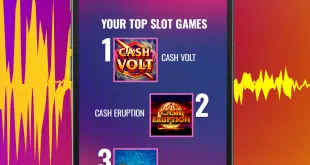NACHA, governing body of the automated clearing house, is considering rules changes that could add volume to the ACH. Among them: allowing recurring payments under the TEL code for telephone-authorized electronic-check conversions; raising the dollar limit to $50,000 for three major e-check codes, and eliminating opt-out notification requirements on two codes.
NACHA first floated the proposals in late June. The comment period ended Friday and now NACHA is sorting through approximately 100 opinions it received. Janet O. Estep, president and chief executive of Herndon, Va.-based NACHA, says the proposals are part of an effort to adapt the ACH to changing customer needs and technology while still keeping risk low. “All of them are there to bring down barriers to ACH conversion,” she tells Digital Transactions News.
Possibly the most significant is the proposal to allow TEL to be used for authorizing recurring payments. Currently, even if a consumer has allowed it before, all e-check conversions arising from permission obtained over the phone from the consumer for an ACH debit must be separately authorized, according to Michael Herd, managing director, ACH network rules. But billers, especially those like insurance companies that generate regular recurring payments, could reduce their costs if customers were allowed to give authorizations for multiple transactions at once on the phone. Companies also could establish a billing relationship faster if a new customer is on the phone instead of directing the customer to the company Web site, sending enrollment forms through the mail, or forcing the customer to use a non-ACH electronic alternative such as a remotely created check (RCC).
NACHA’s ban on recurring TEL transactions originated in 2001 with commentary from staff members of the Federal Reserve, which said a voice recording of the consumer giving permission for recurring payments did not meet the requirement for written authorization approving a transaction. The Fed administers Regulation E, which implements the Electronic Fund Transfer Act that sets the ground rules for electronic payments. Fed staff removed the ban in 2006, in effect making NACHA’s rules more restrictive than Reg E. “That kind of opened the door for us,” Herd says.
Since then, NACHA has been studying the issue and has concluded that billers and financial institutions have the wherewithal to control any associated risk. Technology, especially the Internet, over the past decade has enabled parties to monitor transactions and withdraw approval quickly if there is s suspected problem, NACHA says.
Unscrupulous telemarketers sometimes get account and bank-routing numbers over the phone from consumers and use the data for repeat debits from their demand-deposit accounts. And while they have legitimate uses, RCCs, also known as demand drafts, are controversial because they allow a biller, after getting a single authorization, to create and deposit checks drawn on a consumer’s account without the consumer’s signature (Digital Transactions News, Feb. 26, 2008). Some billers like RCCs because they use so-called Check 21 protocols to clear faster with fewer rules than an ACH transaction.
NACHA says a revised TEL rule could make the ACH more attractive to billers now using RCCs, and in general shine some light on demand drafts. “One of the things about remotely created checks … nobody knows how many are being used,” says Herd.
Two others among the five proposed rule changes would affect ARC, the accounts receivable conversion e-check code for checks sent to lockboxes, and the e-check codes for retail purchases: POP (point of purchase) and BOC (back-office conversion). One proposal would increase the per-transaction dollar limit for ARC, BOC, and POP from the current $25,000 to $50,000. The impetus for this change is coming mainly from credit card issuers that get a small volume of payments that exceed $25,000, according to NACHA. “One may say the $25,000 [limit] was relatively arbitrary,” says Estep. She adds that some might consider $50,000 to be arbitrary, but originating depository financial institutions (ODFIs) could still stick with the current $25,000 limit or even set lower limits for their so-called originators, or business customers that initiate ACH transactions.
The other proposal would eliminate the opt-out requirements for ARC and BOC. NACHA required the opt-outs to address worries about customers’ reluctance to have paper checks converted to ACH transactions. Originators, however, say only 0.1% or even fewer customers do indeed opt out.
If approved by NACHA’s membership, the revised rules would take effect March 18, 2011.





